C4-C8 Corvette
C4 - C8 Corvettes
The History and Development of the Corvette: C4 to C8 (1983 - Present)
A Journey Through Automotive InnovationIntroduction 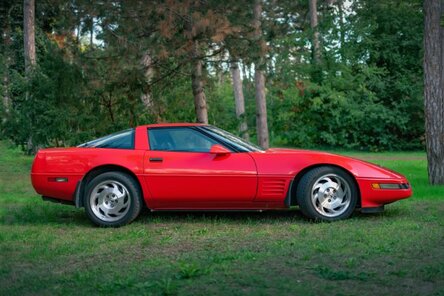 The fourth generation Corvette, known as the C4, marked a significant departure from its predecessors. Introduced as a 1984 model, the C4 featured a completely new design, with a focus on aerodynamics and handling. The sleek, wedge-shaped body and large glass hatchback were aesthetic hallmarks that set it apart.
The fourth generation Corvette, known as the C4, marked a significant departure from its predecessors. Introduced as a 1984 model, the C4 featured a completely new design, with a focus on aerodynamics and handling. The sleek, wedge-shaped body and large glass hatchback were aesthetic hallmarks that set it apart.
The Chevrolet Corvette, an iconic American sports car, has seen tremendous evolution through its generations. From the introduction of the C4 in 1983 to the latest C8 model, the Corvette has consistently pushed the boundaries of automotive design and performance. This document explores the history and development of the Corvette from the C4 to the C8, highlighting key innovations and milestones.
The C4 Corvette (1983-1996)
 The fourth generation Corvette, known as the C4, marked a significant departure from its predecessors. Introduced as a 1984 model, the C4 featured a completely new design, with a focus on aerodynamics and handling. The sleek, wedge-shaped body and large glass hatchback were aesthetic hallmarks that set it apart.
The fourth generation Corvette, known as the C4, marked a significant departure from its predecessors. Introduced as a 1984 model, the C4 featured a completely new design, with a focus on aerodynamics and handling. The sleek, wedge-shaped body and large glass hatchback were aesthetic hallmarks that set it apart.Key Innovations:
- Digital Instrument Cluster: The C4 was one of the first cars to feature a fully digital dashboard, showcasing Chevrolet's commitment to technology.
- Improved Handling: With its uniframe design and independent rear suspension, the C4 offered superior handling and stability.
- Tuned Port Injection: Introduced in 1985, this fuel injection system significantly boosted the Corvette's performance.
The C4 saw various iterations, including the introduction of the ZR-1 in 1990, which boasted a 375-horsepower LT5 engine developed in collaboration with Lotus. This model underscored the Corvette's performance credentials and left a lasting legacy.
The C5 Corvette (1997-2004)
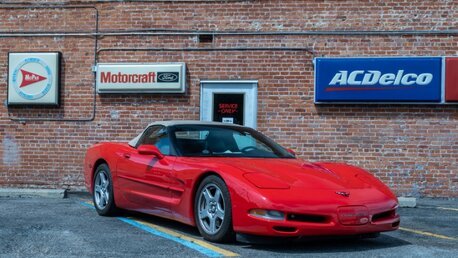 The fifth generation Corvette, or C5, debuted in 1997, bringing with it a host of improvements and refinements. The C5 was designed from the ground up, with a focus on enhancing performance, comfort, and reliability.
The fifth generation Corvette, or C5, debuted in 1997, bringing with it a host of improvements and refinements. The C5 was designed from the ground up, with a focus on enhancing performance, comfort, and reliability.Key Innovations:
- LS1 Engine: The new 5.7-liter V8 engine produced 345 horsepower, offering impressive acceleration and top speed. Transaxle Layout: By placing the transmission at the rear, the C5 achieved better weight distribution and improved handling.
- Hydroformed Frame: This manufacturing technique resulted in a lighter, stiffer chassis, enhancing both performance and safety.
- The C5 also introduced the Z06 model in 2001, which featured a 385-horsepower LS6 engine and various performance upgrades. The C5 generation solidified the Corvette's reputation as a world-class sports car.
The C6 Corvette (2005-2013)
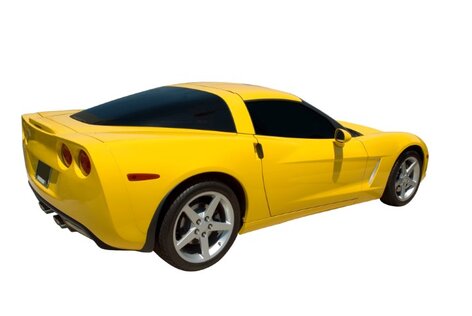 The sixth generation Corvette, or C6, built upon the successes of its predecessor while incorporating numerous technological advancements. Introduced in 2005, the C6 featured a more aggressive design and improved aerodynamics.
The sixth generation Corvette, or C6, built upon the successes of its predecessor while incorporating numerous technological advancements. Introduced in 2005, the C6 featured a more aggressive design and improved aerodynamics.Key Innovations:
- LS2 and LS3 Engines: The base model started with a 6.0-liter LS2 V8 engine producing 400 horsepower, later upgraded to a 6.2-liter LS3 with 430 horsepower.
- Refined Interior: The C6 offered a more luxurious and ergonomic cabin, addressing previous criticisms of interior quality.
- Xenon Headlights: The C6 was the first Corvette to feature xenon headlights, improving visibility and safety.
The C7 Corvette (2014-2019)
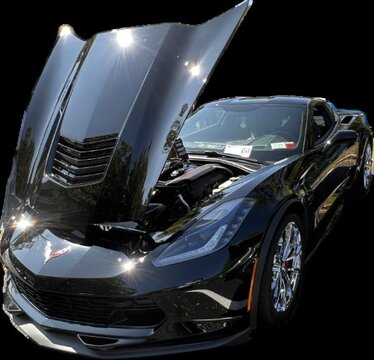 The seventh generation Corvette, or C7, marked a return to the Stingray nameplate and represented a significant leap forward in terms of design and technology. Launched in 2014, the C7 featured a more aggressive and aerodynamic design, along with numerous performance enhancements.
The seventh generation Corvette, or C7, marked a return to the Stingray nameplate and represented a significant leap forward in terms of design and technology. Launched in 2014, the C7 featured a more aggressive and aerodynamic design, along with numerous performance enhancements.Key Innovations:
- LT1 Engine: The new 6.2-liter V8 engine produced 455 horsepower and 460 lb-ft of torque, offering exhilarating performance.
- Advanced Aerodynamics: The C7 incorporated active aerodynamic elements, such as a rear spoiler and air vents, to enhance stability and cooling.
- Driver-Focused Interior: The C7's cabin was designed with the driver in mind, featuring premium materials, advanced infotainment, and customizable displays.
The C7 also introduced the Z06 and ZR1 models, both of which pushed the limits of performance. The Z06, with its 650-horsepower supercharged V8, and the ZR1, boasting a 755-horsepower engine, demonstrated the Corvette's ability to compete with the world's best sports cars.
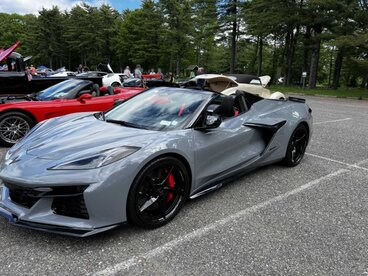 The eighth generation Corvette, or C8, represents the most radical redesign in the model's history. Released in 2020, the C8 features a mid-engine layout, a first for the Corvette, which fundamentally changes its performance dynamics.
The eighth generation Corvette, or C8, represents the most radical redesign in the model's history. Released in 2020, the C8 features a mid-engine layout, a first for the Corvette, which fundamentally changes its performance dynamics.
The C8 Corvette (2020-Present)
 The eighth generation Corvette, or C8, represents the most radical redesign in the model's history. Released in 2020, the C8 features a mid-engine layout, a first for the Corvette, which fundamentally changes its performance dynamics.
The eighth generation Corvette, or C8, represents the most radical redesign in the model's history. Released in 2020, the C8 features a mid-engine layout, a first for the Corvette, which fundamentally changes its performance dynamics.Key Innovations:
- Mid-Engine Configuration: By placing the engine behind the driver, the C8 offers improved weight distribution, handling, and acceleration.
- LT2 Engine: The new 6.2-liter V8 engine produces 495 horsepower and 470 lb-ft of torque, delivering supercar-level performance.
- Dual-Clutch Transmission: The C8 features an 8-speed dual-clutch transmission, providing rapid and seamless gear changes.
The C8 has been lauded for its bold design, advanced technology, and exceptional performance. It has received numerous awards and continues to set new standards in the sports car segment.
Conclusion
From the C4 to the C8, the Corvette has undergone significant transformations, each generation building upon the successes and innovations of its predecessors. The Corvette's journey from a front-engine sports car to a mid-engine supercar is a testament to Chevrolet's commitment to performance, design, and engineering excellence. As the Corvette continues to evolve, it remains an enduring symbol of American automotive ingenuity and passion.
From the C4 to the C8, the Corvette has undergone significant transformations, each generation building upon the successes and innovations of its predecessors. The Corvette's journey from a front-engine sports car to a mid-engine supercar is a testament to Chevrolet's commitment to performance, design, and engineering excellence. As the Corvette continues to evolve, it remains an enduring symbol of American automotive ingenuity and passion.
